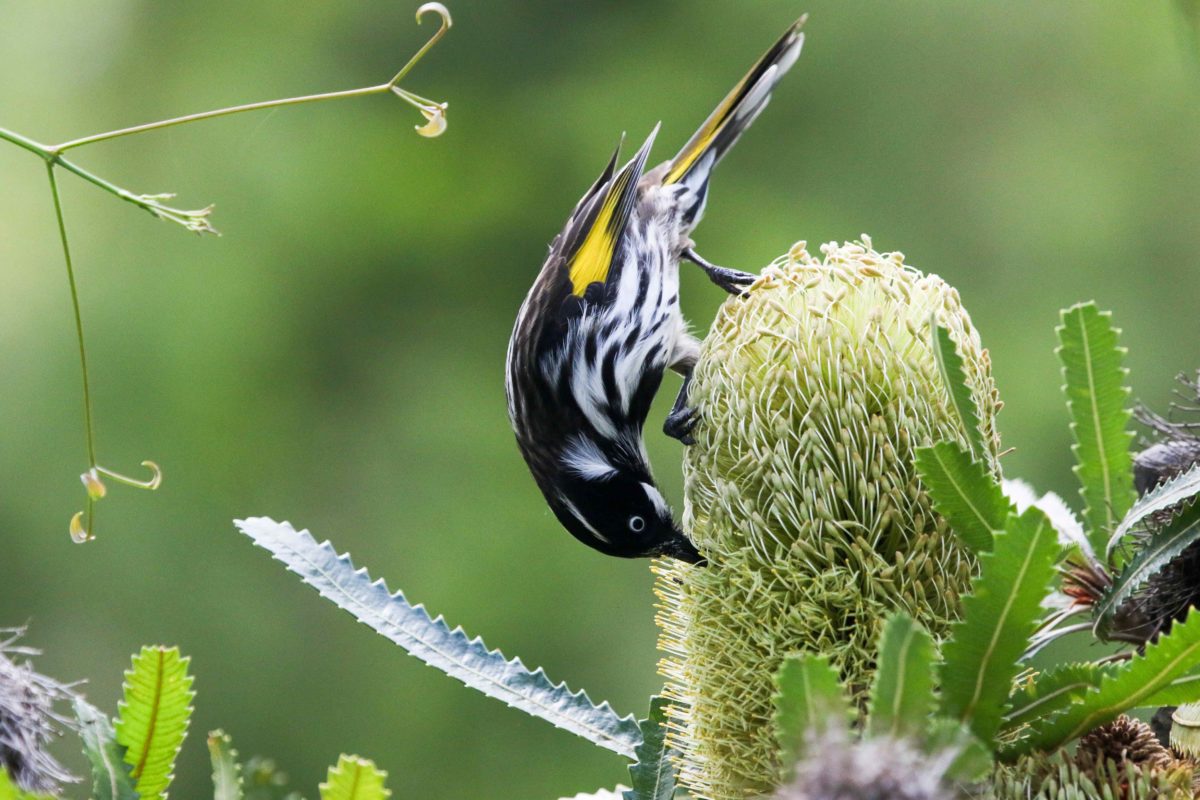While the human world faces crisis after crisis, new research suggests that the native New Holland Honeyeater is perhaps better equipped to face danger than humans are. New research conducted by biologists from the ANU and Cambridge University has revealed that these birds are able to send ‘lightning-fast’ signals to warn others against approaching danger.
Study authors, Dr Jessica McLachlan and Professor Rob Magrath, describe these warning signals as particularly useful in avoiding birds of prey. Dr McLachlan notes:
“When a hawk is swooping down, its target has only a fraction of a second to flee to cover – a split second can make the difference between life and death.”
The honeyeaters are able to gain this minuscule advantage through ‘elegant’ messaging techniques. The warning signals are ‘front-loaded’, so that nearby birds can act quickly. This first note can also be modified to convey whether or not ‘it’s necessary to take immediate cover.’
Notes made after this initial message convey how long the threat remains, advising other birds on how long to remain hidden. This precise warning signals rival our own ability to judge and calculate incoming danger, highlighting the underestimated sophistication of the animal world.
We acknowledge the Ngunnawal and Ngambri people, who are the Traditional Custodians of the land on which Woroni, Woroni Radio and Woroni TV are created, edited, published, printed and distributed. We pay our respects to Elders past and present. We acknowledge that the name Woroni was taken from the Wadi Wadi Nation without permission, and we are striving to do better for future reconciliation.
